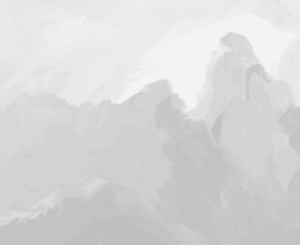
1873 — 1951
James Maxwell
A Scottish physician specializing in psoriasis, serving with an English Presbyterian medical mission, like his father before him. He spent his life pioneering modern medical care in Formosa (Taiwan) and China, dedicating 50 years to caring for leprosy victims and striving to eradicate the disease.
Biography Abstract of Dr. James Laidlaw Maxwell, Junior
1873 Born in Birmingham, England—the second son of Dr. Maxwell and Mary Anne Goodall
1990 Graduated from the University of London
1901 Joined the First Medical Mission with his wife, Millicent Bertha Saunders, a registered nurse; and traveled to Tainan, Taiwan; sponsored by the English Presbyterian medical mission
1908 Published the article, “The Tainan Hospital, Its Story and Needs”
1911 Published the book, “The Diseases of China—including Formosa and Korea” with Dr. W. Hamilton Jeffreys
1914 Undertook the Whole Island Medical Mission Trip in Taiwan, specially attracted to developing a mission plan for native in-landers (the proposal was not approved due to the poor financial situation of his missionary organization)
1915 Left Taiwan, returning to Europe to serve as a physician in the British Field Hospital during World War I
1919 Returned to Taiwan to continue his medical missionary service
1923 Appointed as the Secretary of the China Medical Missionary Association
1923 Moved to Shanghai, China to serve as the Executive Director of the China Medical Association; became the main editor of Chinese Medical Journal and publisher of the book “Prayer Cycle”
1929 Became head of the department of field research at the Lester Institute, Shanghai
1931 Attended the first International Leprosy Association (ILA) conference in Manila as an active member of the ILA
1937 Assumed the position of the Director of the Chinese Red Cross to help all hospitals in central China remain functional during the war with Japan
1940 Returned to Europe due to a severe foot malady
1947 Began limping after undergoing foot surgery
1949 Began working as a physician, specializing in mental disorders and leprosy treatment, in the hospital near the suburbs of Hangzhou, China
1951 Died in Hangzhou due to cerebral malaria; buried in China
Notes
[1] International Leprosy Association: History of Leprosy http://leprosyhistory.org/data...
[2] Ibid.
[3] http://teach.med.ncku.edu.tw/n..., page 54
[4] http://www.sinlau.org.tw/en/mo...
[5] http://teach.med.ncku.edu.tw/n...
[6] https://en.wikipedia.org/wiki/...
[7] Gao Xi, “Chinese Perspectives on Medical Missionaries in the 19th Century: The Chinese Medical Missionary Journal”, Fudan University, 2014.
Sources
魏外揚著, 《中国教会的使徒行传-來華宣教士列傳》。 台北:宇宙光全人關懷機構,2006年。
Jefferys, W. Hamilton and Maxwell, James L. Jr., The Diseases of China—including Formosa and Korea. London: Oxford House, 1911.
Gao Xi, “Chinese Perspectives on Medical Missionaries in the 19th Century: The Chinese Medical Missionary Journal”. History Department, Fudan University, www.sciea.org/wp-content/uploads/2014/05/06_GAO.pdf
Choa, G. H., “Heal the Sick” was their Motto: The Protestant Medical Missionaries in China”. Hong Kong: The Chinese University Press, 1990.
https://en.wikipedia.org/wiki/James_Laidlaw_Maxwell,_Junior
http://enacademic.com/dic.nsf/enwiki/9088016
http://teach.med.ncku.edu.tw/n...
http://www.tpkch.org.tw/weblink/missionary/James_Maxwell.htm
International Journal of Leprosy, Centennial Festskrift edition, Vol 41, No 2, 1973.http://leprosyhistory.org/data...



